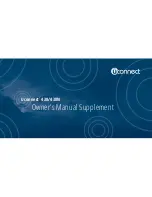
PBX Networking
Technical Details
136
12.4
Technical Details
A different PBX number must be set for each OpenCom 100 in a PBX network. This
setting can be found in the Web console, in the menu
PBX Configuration:
System: Settings
under the heading
System linking
. You can also set the
maximum value for the transit counter there. This value depends on the topology
of the PBX network and should allow the system to have the maximum number of
further connections possible.
You can display the connection status of the lines at any time in the Configurator
menu
System info: PBX: Trunks
. You should check this in particular after making
changes to a configuration to see whether all the lines used for system networking
are operable.
Some of the features possible in Q.SIG are not supported by OpenCom 100 with all
their options, for example callback on busy within the Q.SIG network. The call cate-
gories defined in Q.SIG (e.g. Emergency Call, Operator, Normal) and the Q.SIG
name transmission feature (“user names”) are fully supported.
The code digits to be used for seizing a route with open numbering are not trans-
mitted to the destination PBX and thus cannot be evaluated by it. To reseize a
route (for example for a callback), you must set the appropriate digit prefixes in the
trunk group configuration for the routes to be reseized.
Tip:
If, for example, you are configuring a route which can be
seized using routing code “5” and have selected one or more
bundles for this route, change the
Prefix for dest. call num-
ber at incoming internal
setting to “5” for this bundle in or-
der to enable the route to be reseized.
Owing to their hardware properties, not all S
0
ports of the OpenCom 100 can be
used for PBX networking without restrictions. Depending on the type of system,
Summary of Contents for OpenCom 130
Page 1: ...130 OpenCom100 131 150 Mounting and Commissioning User Guide ...
Page 10: ...8 ...
Page 202: ...Index 200 Notes ...
Page 203: ......
















































